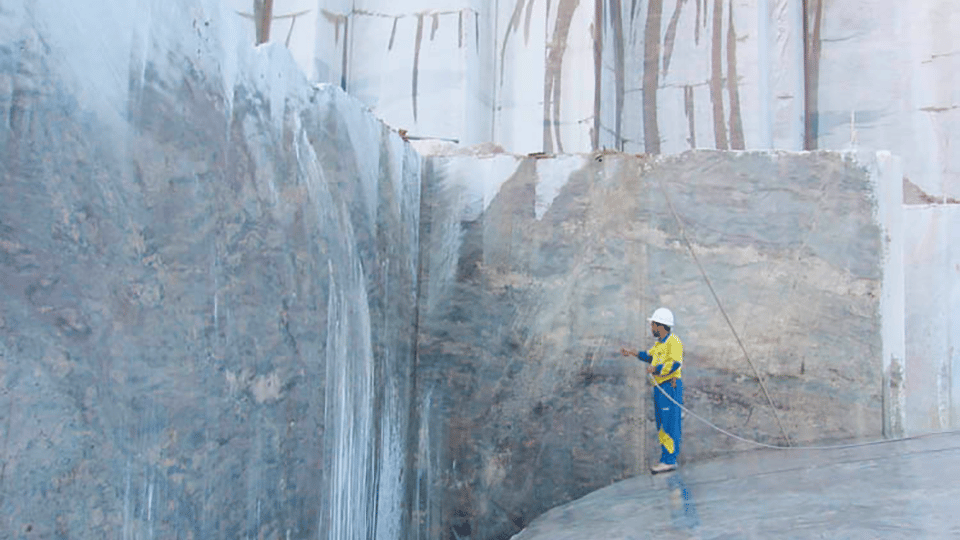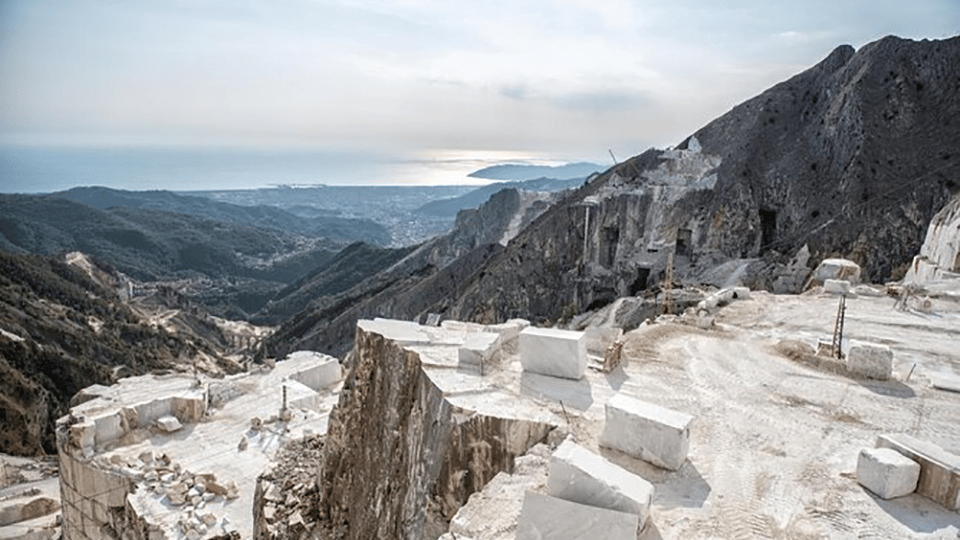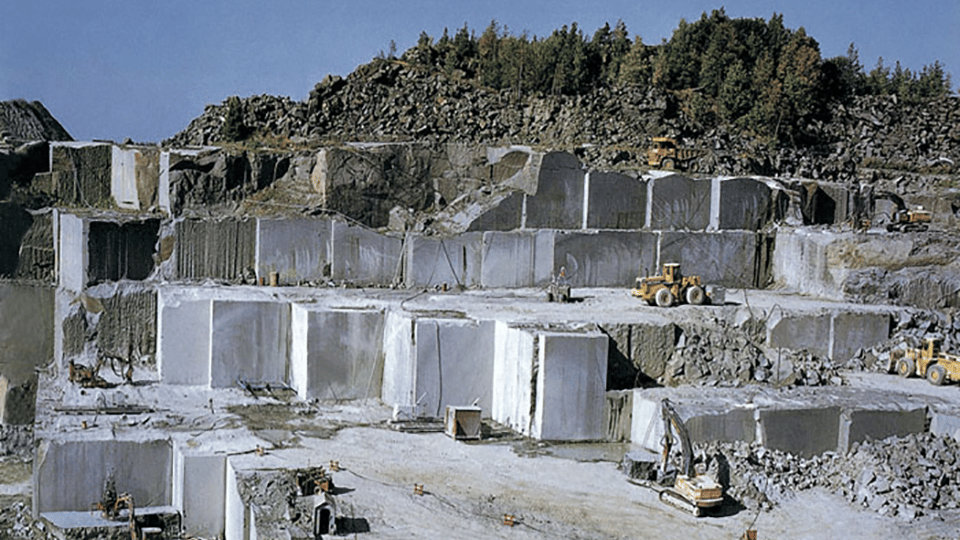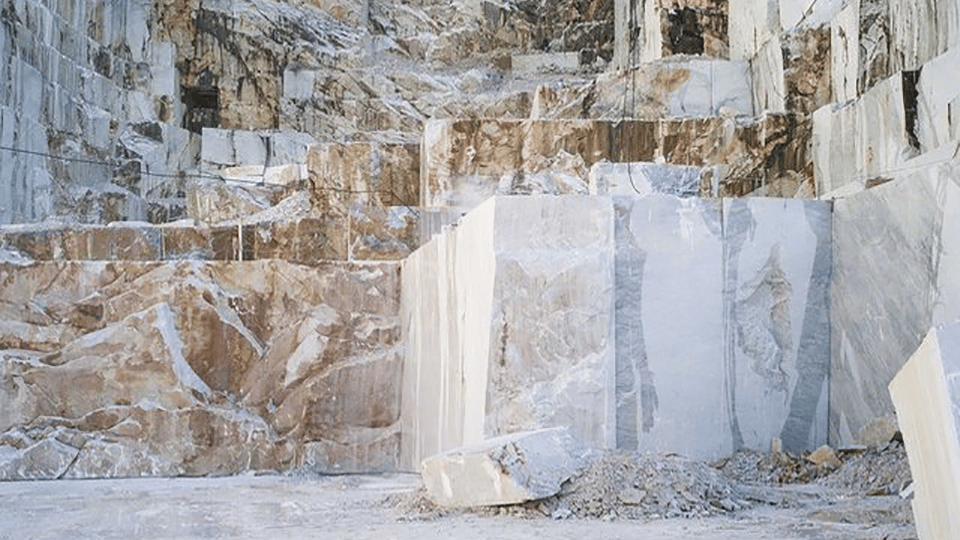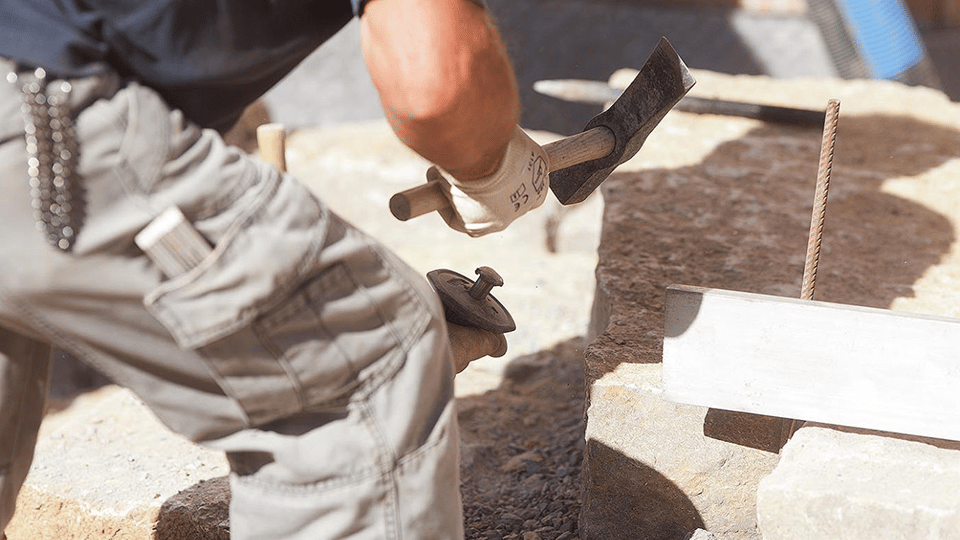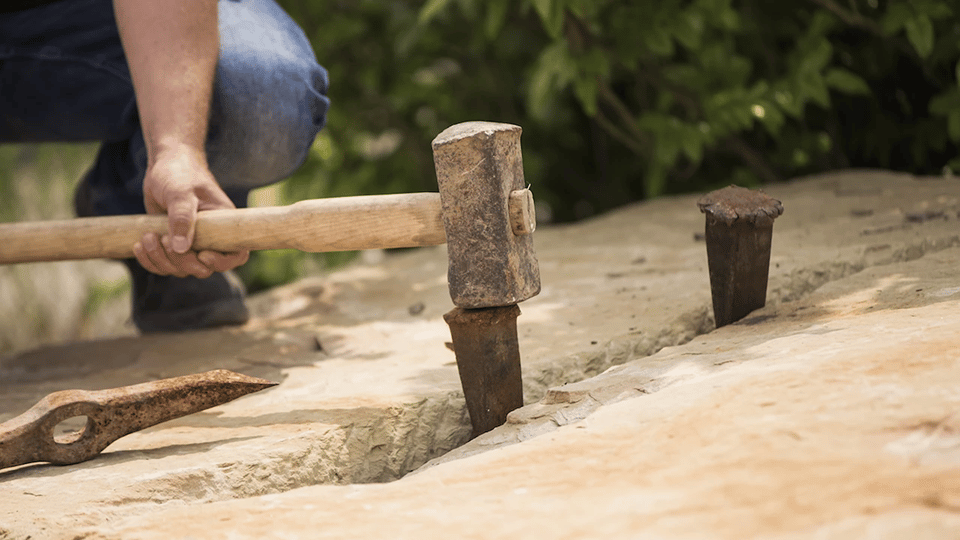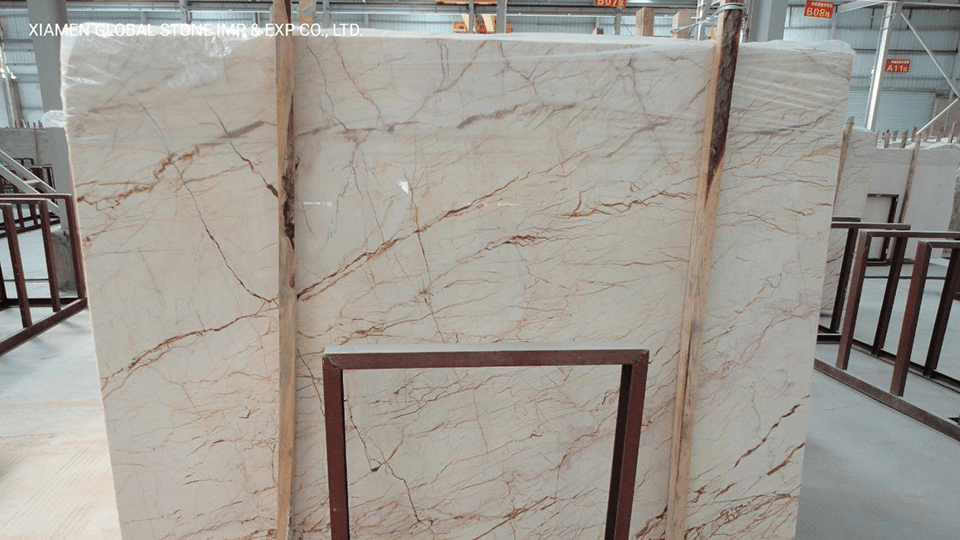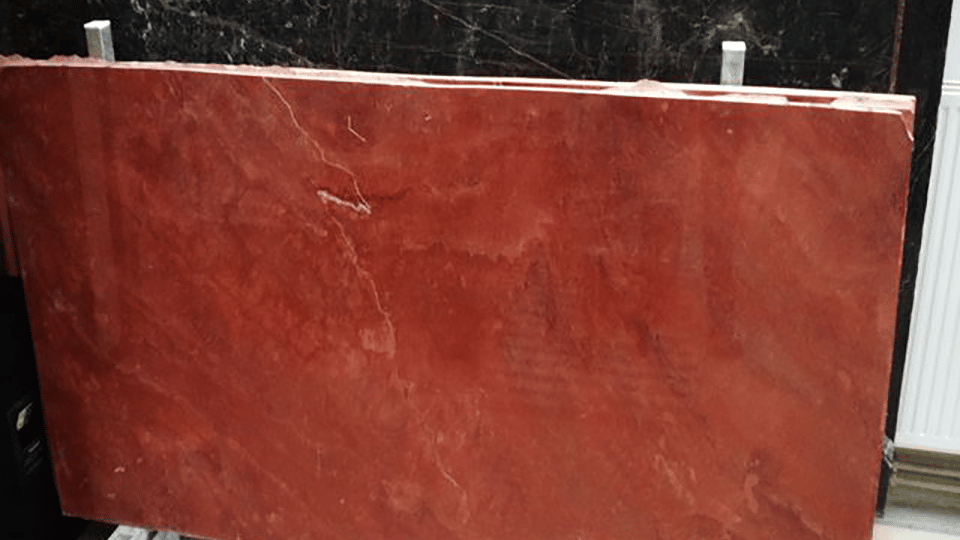A quarry is typically defined as surface excavation for the production of rock as the main product. The difference to open-pit mines or open pits is that the rock itself is the valuable commodity and not a specific mineral within the rock mass. Even before the beginning of our era, rock was mined for the construction of buildings and monuments. There is solid evidence of stone production in ancient times at numerous sites around the world, although it is unclear in which era formal quarries were created instead of using only naturally occurring boulders.
With the advent of historiography, we have the opportunity to get a better understanding of some of the techniques used in quarries. For example, at the time of the Egyptian dynasties, the construction of the earlier pyramids was mainly based on limestone broken with copper hand tools, while later pyramids, although built mainly with mud bricks, used quarry stone for the façade. Granite was also an important building material, especially for detail work. It was extracted directly from the bedrock at mining sites created near some of the country’s greatest monuments. Ancient Egyptian stonemasons cut gutters around the granite blocks they wanted to extract and isolated them from the bedrock, then loosening the rock with massive wooden levers. The Romans also quarried stone material on a large scale for their construction projects, both for buildings and monuments. A wider range of rock types were produced, including fine marble, which was used for works of art such as sculptures and in architecture for public buildings. The Romans used quarry hammers to insulate their preferred blocks, and then metal wedges to pry them off the rock.
Natural stone and its uses
Natural stone is the name given to natural rock that has been quarried and shaped according to certain dimensions or specifications for use in construction and in the manufacture of sculptures, monuments and memorials. Essentially, the term refers to any stone that can be mined in large blocks and then made into slabs, blocks, tiles, or slabs. In practice, there is a certain grey area between classic natural stones, which are largely used as ornamental stones, and natural building materials, in which the physical properties of rocks are used to produce regularly shaped building blocks.
From a historical point of view, the production and use of natural stones goes back a long time, since, for example, Mesolithic and Neolithic monuments in Europe, the Middle East and elsewhere were clearly built with shaped stones. Classical Greek and Roman architecture is characterized by a high degree of skill in the use of natural stones. For example, the Romans discovered and used the world’s only known source of purple porphyry rock for their Capitoline Temple to design decorative columns. In this task, the stone was quarried in column-sized pieces in the Red Sea Hills in eastern Egypt and then transported to Rome by land and sea. Elements of the Great Pyramid were also sourced from great distances before being machined to exact measurements, while more examples of high-quality stone masonry can be found on each continent.
Some of the most commonly used commercial stones today include marble, granite, slate, and sandstone, all of which can be found in a variety of optical and physical properties. However, this is by no means an exhaustive list, and rock types such as limestone, basalt, gabbro, travertine and tufa are also widely used where they are suitable due to their properties. Volcanic origin: Tufa is essentially a very soft rock, but it is easy to work with. The application examples range from building and cladding material for many buildings in Armenia to the huge moai statues on Easter Island. Among the most important characteristics of natural stones, which determine their popularity and use, are color, pattern and texture, durability and continuity of supply. Different markets demand different quality features.

